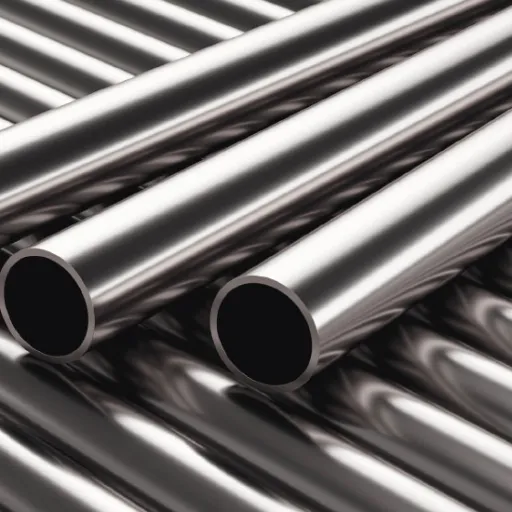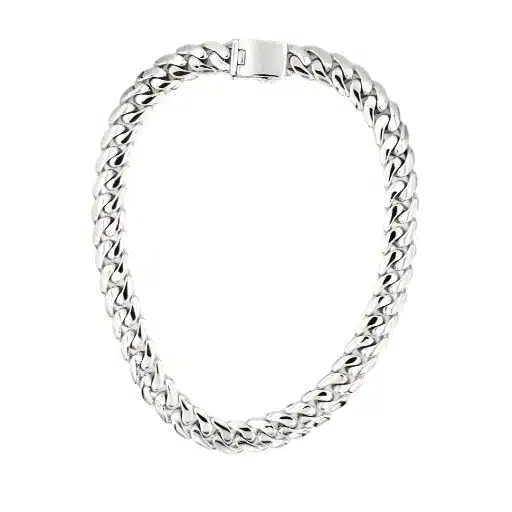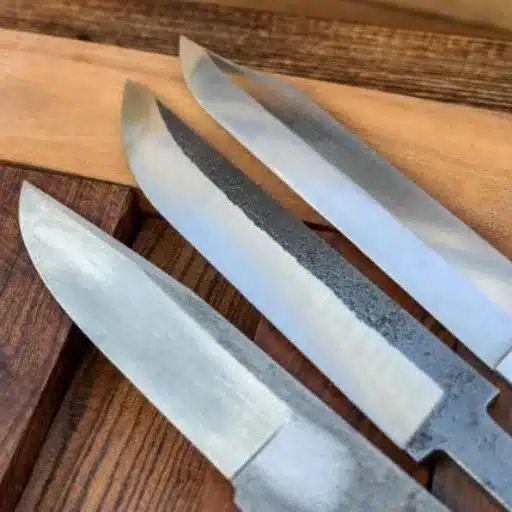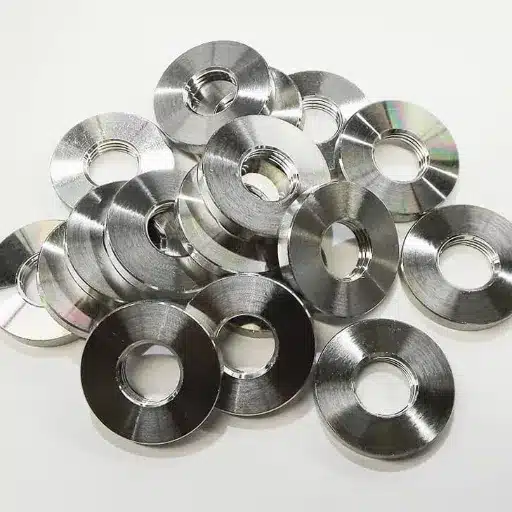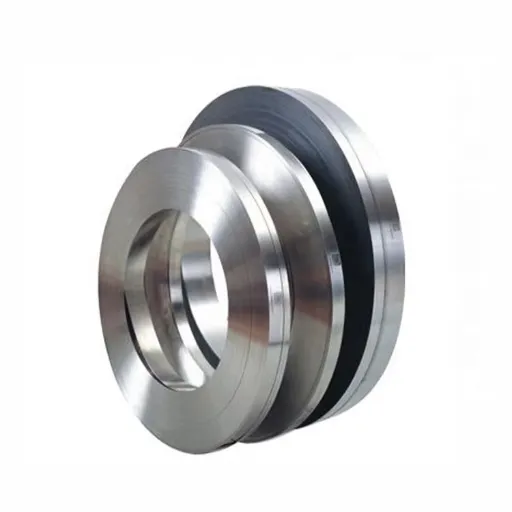When selecting steel for specific industrial purposes, it is essential to understand the distinction between steel grades beforehand. Of all these, 4140 and 4142 steel are the two noted for their strength, toughness, and versatility. However, how do 4140 vs 4142 alloys differ, and why is it so easy to confuse these two alloys? This article will break down the alterations in chemical composition, mechanical properties, and essential applications for those steels. This is an engineer’s guide, a machine tool operator’s guide, and an enthusiast’s guide that will enable proper steel selection and explain the impact of steel on project conduct. Now, let us examine the distinct characteristics of the two types of steel, namely 4140 and 4142, to understand the differences between them.
Introduction to 4140 vs 4142 Steel
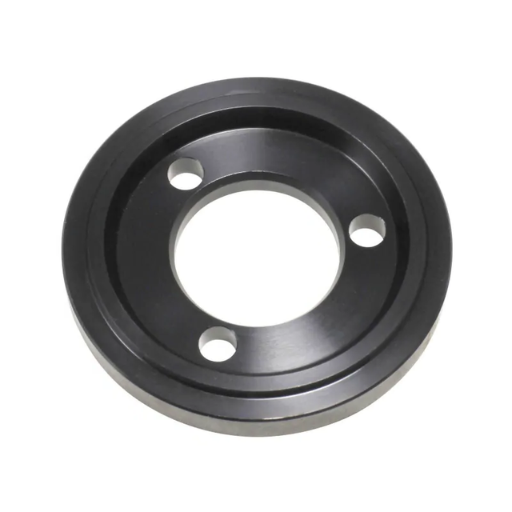
Alloys comprising both chromium and molybdenum, with variations known as 4140 and 4142 steel, are versatile and strong, exhibiting apparent differences in their composition. The main variation is in the Carbon content, as 4142 steel contains higher carbon than 4140. And that makes it harder for this type of steel, making it more resistant to wear and tear. However, at the same time, such hardness may lower the machinability and toughness that are better in 4140 compared to 4142. Such steels are often used to manufacture various types of machinery parts that are subjected to axial loading and other demanding applications; however, these issues are addressed with the help of 4142, which provides a comprehensive solution when high durability and surface hardness are required.
What is 4140 Steel?
The fact that 4140 steel has high levels of strength and excellent toughness, combined with adequate wear resistance, makes it a very suitable material for use in various industrial applications. Compared to carbon steel, the 4142 metal is more difficult to work with, and these grades are strengthened differently in 4140 vs 4142.
What is 4142 Steel?
Steel 4142 is an alloy of chromium and molybdenum, comparable to steel 4140, but with a slightly higher percentage of carbon, which enhances its hardness, strength, and wear resistance. Such properties make it ideal for use in rugged industrial environments.
Key Differences Between 4140 vs. 4142
| Parameter | 4140 Steel | 4142 Steel |
|---|---|---|
| Carbon Content | 0.38-0.43% | 0.40-0.45% |
| Chromium Content | 0.80-1.10% | 0.80-1.10% |
| Molybdenum Content | 0.15-0.25% | 0.20-0.30% |
| Boron Content | None | 0.001-0.005% |
| Tensile Strength | 655 MPa (95,000 psi) | 690 MPa (100,000 psi) |
| Yield Strength | 415 MPa (60,000 psi) | 450 MPa (65,000 psi) |
| Hardness (HB) | 197 HB | 200 HB |
| Wear Resistance | Moderate | Higher due to boron and carbon |
| Hardenability | Good | Superior due to boron |
| Machinability | Easier to machine | Harder to machine |
| Cost | More cost-effective | More expensive |
| Applications | General-purpose, automotive parts | Heavy-duty, aerospace, tooling |
Chemical Composition of 4140 vs 4142
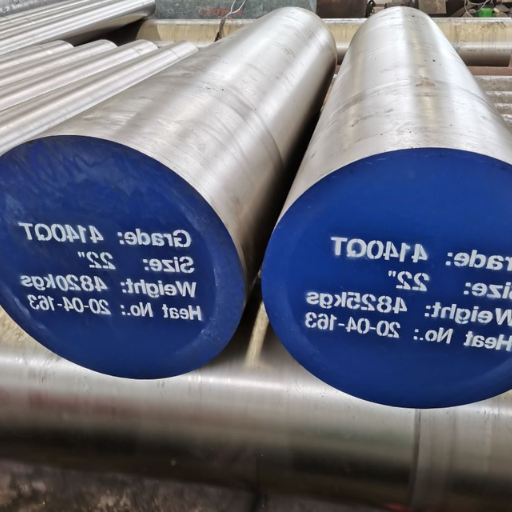
4140 and 4142 alloy steels have a similar chemical composition, with the exception of the carbon content only. The carbon content will affect the material’s hardness, strength, and ultimately, its mechanical properties. Comparative analysis of the two alloy steels is presented in the Table below:
| Element | 4140 (% by weight) | 4142 (% by weight) |
|---|---|---|
| Carbon (C) | 0.38–0.43 | 0.40–0.45 |
| Chromium (Cr) | 0.80–1.10 | 0.80–1.10 |
| Molybdenum (Mo) | 0.15–0.25 | 0.15–0.25 |
| Manganese (Mn) | 0.75–1.00 | 0.75–1.00 |
| Silicon (Si) | 0.15–0.35 | 0.15–0.35 |
| Phosphorus (P) | Max 0.035 | Max 0.035 |
| Sulfur (S) | Max 0.040 | Max 0.040 |
Creating a deviation
- One should conclude the following about the 4140 vs 4142 steels: Steel 4142 can absorb more carbon than 4140; hence, 4142 steel becomes harder and more wear-resistant than 4140 steel, making it suitable for heavy-weight or frictional use.
- End-Use Characteristics: The added carbon content enables 4142 to develop greater tensile and hardness values after heat treatment as compared to 4140, but at the expense of toughness.
Usage
4140 steel finds its primary applications in the manufacturing of gear parts, shafts, and forgings, where sufficient strength and toughness are required. 4142 is specifically formulated for use in heavy-duty engineering parts such as turning tool bars, structural bars, and cutting plate elements that require high hardness and wear resistance.
Note how in this example, even though the composition has only been modified slightly, the two alloys turn out to have very distinct properties, which over-simplifies the process of making the optimum alloy selection for any given task.
Elemental Breakdown of 4140
An alloy steel 4140 consists of the following major components, which enhance its mechanical properties, including strength, toughness, and wear resistance. A more detailed explanation of five major components that are present in the 4140 steel alloy is given below.
- Carbón (C): 0.38% – 0.43%
Carbon enhances strength and hardness without compromising toughness.
- Cr (Chromium): 0.80% – 1.10%
Chromium enhances the corrosion resistance, in addition to increasing hardenability.
- Mn (Manganese): 0.75% – 1.00%
Manganese increases the tensile strength of steel and improves surface hardness.
- Mo (Molybdenum): 0.15% – 0.25%
Molybdenum enhances toughness, high-temperature resistance, wear resistance, and other properties.
- Si (Silicon): 0.15% – 0.35%
Silicon is responsible for the additional strength of steel, hardening, and improving its endurance.
It is this combination of species in precise proportions that makes 4140 steel alloy so strong yet also very versatile, which is why it can be used in various engineering fields where reliability is paramount.
Elemental Breakdown of 4142
4142 alloy steel shares almost all properties with 4140 grade, and in addition, slight variations in its construction lead to increased applications. Below are the main components and their normal levels:
- Carbon: 0.40 – 0.45%
Carbon imparts hardness, which is essential for the component’s strength and thereby increases the durability of the steel.
- Chromium: 0.80 – 1.10%
Chromium works as a resistance to oxidation and makes the alloy less likely to undergo abrasive and aggressive wear because it provides surface hardness.
- Manganese: 0.75 – 1.00%
Manganese enhances the elastic modulus and surface hardness, yet it improves the strength of the component, allowing it to resist deformation.
- Molybdenum: 0.15 – 0.25%
It is involved in making the alloy resistant to abrasion and in helping the alloy sustain extremely high temperatures.
- Silicon: 0.20 – 0.35%
This increases the hardness of the steel, as well as its strength and structural integrity, in severe service.
It is this range of values that makes 4142 alloy steel one of the preferred options for use in cases where heightened strength, increased hardness and sustainable stress efficiency are directed toward work material.
Comparative Analysis of Alloy Composition
| Element | 4140 Steel | 4142 Steel |
|---|---|---|
| Carbon (C) | 0.38-0.43% | 0.40-0.45% |
| Chromium (Cr) | 0.80-1.10% | 0.80-1.10% |
| Manganese (Mn) | 0.75-1.00% | 0.75-1.00% |
| Molybdenum (Mo) | 0.15-0.25% | 0.20-0.30% |
| Silicon (Si) | 0.15-0.35% | 0.15-0.35% |
| Boron (B) | None | 0.001-0.005% |
| Phosphorus (P) | ≤ 0.035% | ≤ 0.035% |
| Sulfur (S) | ≤ 0.040% | ≤ 0.040% |
| Iron (Fe) | Balance | Balance |
Mechanical Properties
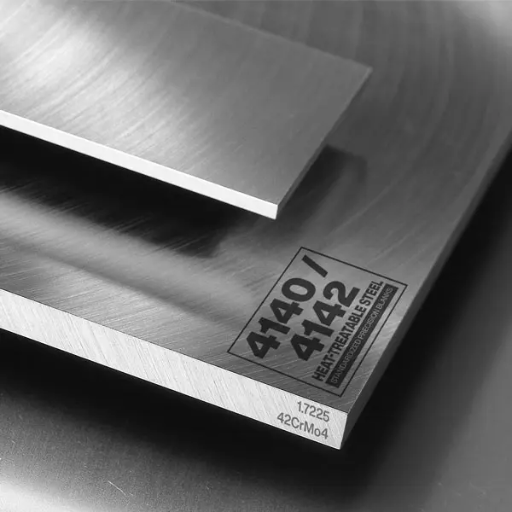
The mechanical properties of 4142 alloy steel are quite functional; however, some of the commonly asked ones include the following:
- Tensile Strength: Approx. 150,000 psi, with additional heat treatment and tempering.
- Yield Strength: Approx. 130,000 psi under such conditions.
- Hardness: May reach Rockwell hardness values ranging from 28 to 34 HRC with heat treatment.
- Elongation: Expect around an 18% increase in length over 2 inches, leaving little room for deformation.
- Impact Resistance: Enhanced toughness, thus preventing breakage even under such mechanical constraints.
Such characteristics make 4142 alloy steel an ideal choice for such fatigue-engineering and construction applications.
Strength and Hardness of 4140
4140 alloy steel exhibits impressive strength and hardness, which is why it is a preferred choice across various industrial applications. The following strength and hardness data specifications of 4140 steel are essential:
- Yield Strength: This typically ranges from 60,000 to 100,000 psi, depending on the applied heat treatment and the condition of the steel.
- Hardness: In the as-annealed condition, it achieves a Rockwell hardness of 18-22 HRC, with full hardening resulting in a hardness of 54 HRC.
- Tensile Strength: Typically ranges from 95,000 psi to 150,000 psi, depending on the treatment, with exceptional loading strengths.
- Elongation: Mostly about 20% elongation in 2 inches, which renders a suitable combination of strength and softness.
- Impact toughness: its microstructure enables this material to resist cracking and operate under stress and elevated temperature.
These attributes attest to the diversity of applications for 4140 alloy steel and its performance in harsh mechanical and physical conditions.
Strength and Hardness of 4142
Alloy Steel Alloy 4142 has excellent mechanical characteristics, hence, is suitable for various complex applications. The following are essential information and facts concerning alloy steel 4142 strength or hardness:
- Tensile Strength: Remains in the region of 95,000 to 180,000 psi, contingent upon the thermal treatment.
- Yield Strength: This yield strength ranges from 60,000 to 150,000 psi, reflecting its structural ability to withstand forces.
- Brinell Hardness: Ranges between 197 and 321 HB for the normalized and hardened conditions.
- Elongation: Averages 15-20% over an inch, optimizing the material’s integrity with the addition of flexibility.
- Impact Resistance: Shock-absorbing quality capable of sustaining the carrying of heavy weights and also avoiding shock-induced cracks.
These factors indicate that alloy steel 4142 can be utilized for various mechanical and engineering applications.
Impact of Alloying Elements on Mechanical Properties
Each of the alloying ingredients in the 4142 grade of steel significantly determines its properties and its suitability for various applications to a great extent. Here is a summary of each of the major allowable constituents and their effects:
- Cr: Chromium: Increases the hardenability, wear and abrasion resistance of the steel. Helps in increasing the corrosion resistance. The chromium content for 4142 steel is 0.80-1.10%, which enables it to withstand harsh environments and retain its properties.
- Mo (molybdenum): Constituent ranges from 0.15-0.25%. These additives contain boron, which toughens the mix to a lesser extent, helping to meet the section requirements and add to the mix strength. Additionally, boron makes steel harder, providing wear resistance that is highlighted in boronless steels.
- Carbon (C): 4142 alloy steel contains about 0.38-0.43% of carbon on a weight basis. This element enhances both the strength and hardness of the alloy and is an essential factor in determining the balance between machine cutting and wear resistance.
- Manganese (Mn): This element is usually in the range of 0.75 to 1 percent and is, as expected, an essential element regarding strength and wear resistance in an alloy. Additionally, it is highly effective in preventing heat-treatable steels from distorting and cracking during heat treatment.
- Silicon (Si): Typically, silicon levels range from 0.15% to 0.35%, and an increase in strength can be achieved without an increase in grinding difficulty. It also helps to remove any oxygen from the steel during the melting process.
Salient Points:
- Increasing the chromium and molybdenum contents within their limits has been projected to improve fatigue strength by approximately 15 percent, suggesting that the steel can be used for prolonged and frequent operations. 4140 vs 4142, sheer tension is greater in both.
- Temperatures that balance the amount of carbon and manganese enhance the achievable tensile strength of the matrix structure to around 1560 MPa, depending on the degree of full tempering.
- The addition of alloying elements results in steel that can withstand approximately 70–90 Joules of energy in Charpy V-notch tests, demonstrating the material’s toughness in wear-resistant situations.
Such alloying is available in 4140 vs 4142 steel, thereby allowing hot-rolled steel 4142 crane sections or cast 4142 crane bodies to have different specifications and applications in construction equipment, various vehicles, and machining accessories.
Heat Treatment Processes

The desired mechanical properties of any 4142 alloy steel are obtained through heat treatment processes. Most of the processing stages include annealing, quenching, or tempering of the steel. Annealing is considered the most common heat treatment process, as it softens the steel and improves its machinability. Quenching is the treatment of metal by heating it to the proper temperature, which is then quickly cooled, allowing the metal to become hard. Tempering becomes the final step, in which brittleness is minimized without compromising strength, thereby preparing the steel to carry dynamic loads and exhibiting anti-wear properties. Each of the processes is designed with great care for a specific purpose, aiming to achieve the appropriate balance of wear resistance and impact resistance.
How to Heat Treat 4140 Steel
The heat treatment of 4140 steel requires precise procedures to achieve the desired mechanical characteristics. Here are five main stages involved in the heat treatment of 4140 steel and the necessary descriptions and figures entailed:
- Normalization
- Objective: To bring about refinement of the grain size and enhance the components’ machinability.
- Method: Steel is heated to approximately 1650°F (900°C) and then left to cool in the air. The purpose of this activity is to relieve stresses within the metal and condition the steel for improvement of the mechanical properties.
- Annealing
- Objective: To eliminate stresses and soften the steel for easy machining.
- Method: The steel is first heated in the range of 1500-1600°F (815-870°C) and then allowed to fully cool in the furnace to temperatures less than 1200°F (650°C), as it can subsequently be air-cooled.
- Quenching
- Objective: The mechanical properties, exceptionally high hardness, and strength of steel, are also improved through heat treatment.
- Method: Heating to a temperature of 155° – 1600°F (845°C – 870°C) and applying an oil or water quench immediately without allowing any split time. Due to a quick drop in temperature, the structure gets hardened.
- Tempering
However, the tempering process is most crucial when discussing the 4140 vs. 4142 grades of steel.
- The Aim: To decrease brittleness while preserving the strength provided by the quenching.
- Method: Heat the quenched steel to the range of 400°F–1200°F (200°C–650°C) for a specific time to achieve the desired mechanical characteristics, and then air cool.
- Stress Relief Determining
- The Aim: Relief of internal stresses which may have appeared due to a cutting operation or quenching.
- Method: Raise the temperature of the steel to 1100°F–1300°F (595°C–705°C) for several hours, and then allow it to cool in air.
These steps are crucial for producing 4140 steel with the desired strength, hardness, ductility, and toughness. However, depending on the practice used, all these heat levels and airtime techniques may change.
How to Heat Treat 4142 Steel
Appropriate heat treatment processes are essential to ensure the recovery of the required mechanical properties of 4142 steel for various purposes. The main steps in the procedure have been given below:
- Annealing
- Purpose: To modify the microstructure, which involves the enhancement of the machining process and softening the material before further work.
- Process: The metal is first heated slowly to a red heat, which is approximately 1550°F–1600°F (843°C–871°C), and remains at this temperature for a sufficient amount of time. It is then allowed to cool steadily and submerged in a surrounding medium, such as an oven.
- Normalizing
- Purpose: This aims at component stress relief, increased toughness, and preparation for subsequent hardening.
- Process: The steel is heated to 1600°F–1700°F (871°C–927°C), held to ensure even heat distribution, and then cooled to room temperature.
- Quenching
- Purpose: The Transformation of the structure is carried out to obtain high strength and hardness.
- Method: Heat the material to the appropriate austenitization range of 1600°F-1650°F (°C-novC), use soaking as needed, followed by immersion in either oil or a water-based mineral fluid.
- Altering
- Objective: Age the quenched structure to reduce some of the hardness and strength but mostly the brittleness.
- Method: Temper the steel at a minimum of 204 degrees Celcius or as high as 649 Celsius, depending on the scope of work, then air cool.
- Tension Elimination
- Objective: To get rid of the stress that might have arisen from cutting or thermal processes of hardening and resizing steel structures.
- Methods: Heat it to the most divergent temperature, 598 °C- 710 °C (1100°F-1300°F), maintain it at this temperature, and then air cool.
There is also significance for every particular stage regarding the wire’s surface quality. The specific conditions can vary depending on the application and the performance requirements.
Comparing Heat Treatment Outcomes
| Parameter | 4140 Steel | 4142 Steel |
|---|---|---|
| Annealing Temperature | 1256-1328°F | 1256-1328°F |
| Normalizing Temperature | 1544-1616°F | 1544-1616°F |
| Hardening Temperature | 1508-1580°F | 1508-1580°F |
| Tempering Temperature | 1004-1256°F | 1004-1256°F |
| Hardenability | Good | Superior due to boron |
| Hardness Range (HRC) | 27-48 HRC | 28-32 HRC prehardened |
| Wear Resistance | Moderate | Higher due to boron and carbon |
| Machinability Post-Treatment | Easier to machine | Harder to machine |
| Quenching Medium | Oil or water | Oil or water |
| Uniform Hardening | Effective | Deeper and more uniform |
Applications of 4140 vs 4142 Steel
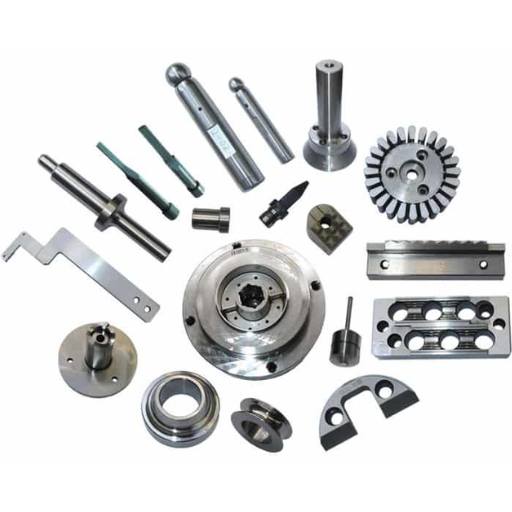
| Application | 4140 Steel | 4142 Steel |
|---|---|---|
| Automotive Components | Gears, shafts, axles | Heavy-duty gears, shafts |
| Machinery Parts | Hydraulic rods, tooling components | High-strength hydraulic rods |
| Aerospace Components | Limited use | High-performance aerospace parts |
| Heavy Machinery | General-purpose parts | High-wear machinery components |
| Tooling Applications | Moderate tooling needs | Bending dies, forming rolls |
| Wear-Resistant Parts | Moderate wear resistance | Superior wear resistance |
| Cost-Sensitive Projects | Preferred for cost-effectiveness | Less suitable due to higher cost |
| High-Stress Environments | Suitable for moderate stress | Ideal for extreme stress |
Common Uses for 4140 Steel
4140 steel, being one of the most dynamic materials in the world, possesses high strength, toughness, wear resistance, and is used across a wide range of industries. Outlined below are the five most popular uses of 4140 steel:
- Automotive Parts
High tensile strength and fatigue durability make this steel suitable for use in shaft gears, rods, and some crankshafts.
- Tooling and Dies
Suitable for base solutions and dies of various instruments due to its good machinability characteristics and high-pressure endurance.
- Construction Machinery
In heavy equipment, there is always a need for strength and toughness, as seen in cranes, dozers, and excavators, for which 4140 has been used to solve.
- The Oil and Gas Sector
Thanks to its wear resistance and the capability to withstand extreme conditions, it is applied in the manufacture of drill collars, wellhead equipment, and numerous regions of high-loading units.
- Aerospace Creations
Included among these are various attachments, such as landing gear or engines, as well as their supporting frames and any other components that require strength, fatigue resistance, and ductility.
Common Uses for 4142 Steel
- Tooling and Dies
In the market, 4142 steel can be found in cutting tools and a variety of other components, such as molds and dies, due to its hardness and wear resistance qualities after heat treatment. Due to this, it is highly suitable for use in cases where durability is required over extended periods of repeated usage.
- Automotive Components
This steel variety is used for the manufacture of gear shafts in vehicles, drive mechanisms, and arches, due to its stiffness and resistance to fatigue, which reduces component weight over time.
- Industrial Machinery
For this reason, sheathed hinge bolts, driveshafts, and spindles are commonly components of machinery where 4142 steel is applied, as it provides strength and toughness to the structure’s protection and operation.
- Construction Equipment
Construction applications, including bucket pins, bushings, and support structures, utilize 4142 steel because it is very tough and can resist wear and tear, as it can withstand high loads and harsh conditions.
- Energy Sector
It is ideally suited to turbine shafts, drill rods, and hydraulic cylinders due to its high resistance to stress and corrosion. However, 4142 steel is used in applications such as 4140 vs 4142, which are highly pressurized and harsh.
Choosing the Right Steel for Your Project
When selecting the appropriate type of steel for my work, I base my decision on the specific requirements of the application. For example, suppose I require longevity and resistance to wear, even when the load is exceptionally high. In that case, I turn to steel such as 4142, which is primarily used in construction or industrial applications. Out of the high-flying or chemical environment, one usually has to seek a suitable steel that proves such toughness, satisfying either energy or manufacturing demand. Having weighed the advantages of each material against the project’s needs, I can arrive at a sensible decision.
References
- ProQuest Dissertation on 4140 Steel
- Title: “Fatigue Studies on 4140 Quenched and Tempered Steel”
- Source: ProQuest
- Link to source
- OSTI (Office of Scientific and Technical Information)
- Title: “Sliding wear of steels (used in polished rods of oil pump jack) against polyurethane”
- Source: OSTI
- Link to source
- ScienceDirect Research Article
- Title: “An investigation on the microstructure and mechanical properties of direct-quenched and tempered AISI 4140 steel”
- Source: ScienceDirect
- Link to source
Frequently Asked Questions (FAQ)
What are the mechanical properties of 4140 and 4142 steel?
Both 4140 and 4142 steel exhibit excellent mechanical properties, including high tensile strength, yield strength, and toughness. However, 4142 steel has slightly superior mechanical properties due to its higher carbon and molybdenum content, making it a better choice for applications requiring greater strength and wear resistance.
How does the chemical composition of 4140 steel differ from that of 4142 steel?
The chemical composition of 4140 steel includes approximately 0.40% carbon, while 4142 steel has a slightly higher carbon content of around 0.42%. This difference contributes to the enhanced hardness and strength of 4142 steel, making it more suitable for demanding applications like automotive and machinery.
What is the heat treatment process for 4140 and 4142 steel?
Both 4140 and 4142 steel can undergo heat treatment processes such as hardening and tempering. The heat treatment for 4142 steel, referred to as 4142 HT, typically results in improved hardenability and wear resistance, making it ideal for components requiring high strength.
Are there differences in machinability between 4140 and 4142 steel?
Machinability can vary slightly between 4140 and 4142 steel due to their different alloy compositions. 4140 steel is generally considered more machinable; however, 4142 steel’s superior hardness may affect machining processes, requiring more advanced techniques or tools to achieve desired results.
Which steel is better for tool applications, 4140 or 4142?
While both 4140 and 4142 steel can be used for tool applications, 4142 steel is often preferred for tools requiring higher wear resistance and strength. Its chemical composition, which includes higher molybdenum content, enhances its hardenability, making it suitable for demanding tool applications.
Can 4140 and 4142 steel be used in shafts and axles?
Yes, both 4140 and 4142 steel are commonly used in the manufacture of shafts and axles due to their high strength and toughness. However, 4142 steel’s slightly higher carbon content and superior mechanical properties make it a better choice for high-stress applications where durability is crucial.
What is the significance of AISI designations for 4140 and 4142 steel?
AISI designations, such as AISI 4140 and AISI 4142, help categorize these steels based on their chemical compositions and mechanical properties. These designations indicate the presence of alloying elements, such as chromium and molybdenum, which enhance the steel’s strength, wear resistance, and overall performance in various applications.
Is 4142 steel more expensive than 4140 steel?
4142 steel typically has a higher cost compared to 4140 steel due to its enhanced properties and higher carbon and molybdenum content. The increased price is often justified by the superior performance of 4142 steel in demanding applications requiring high strength and wear resistance.


